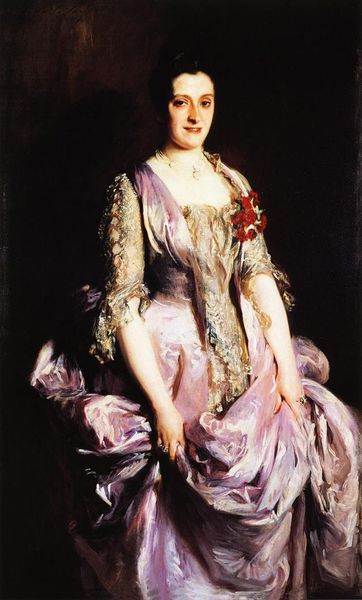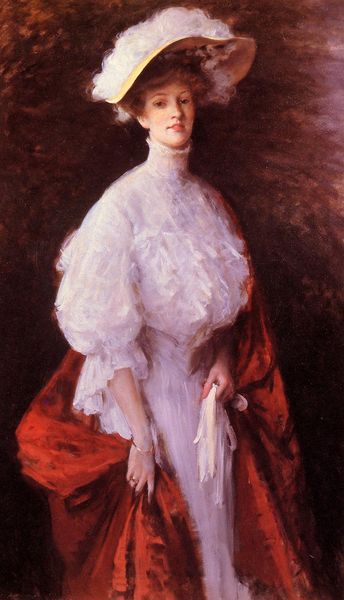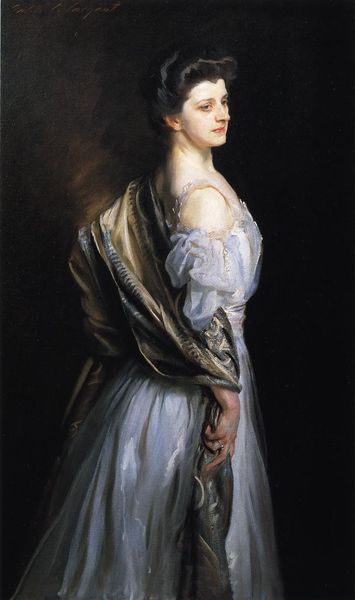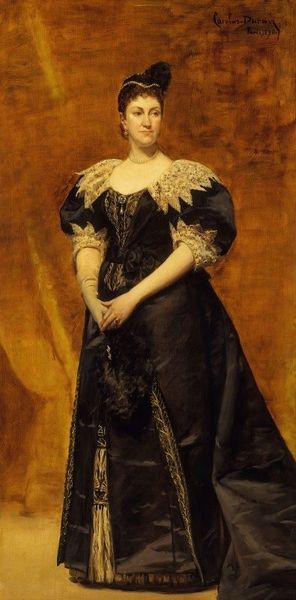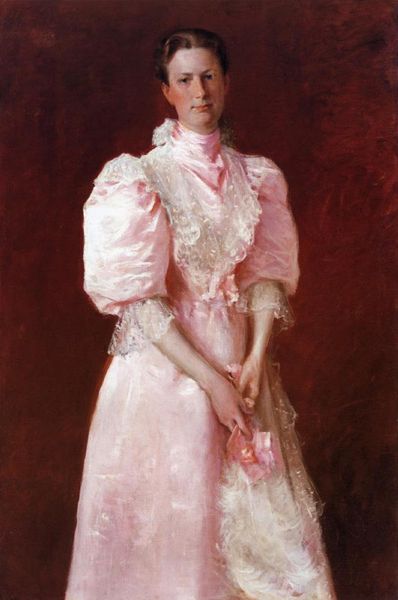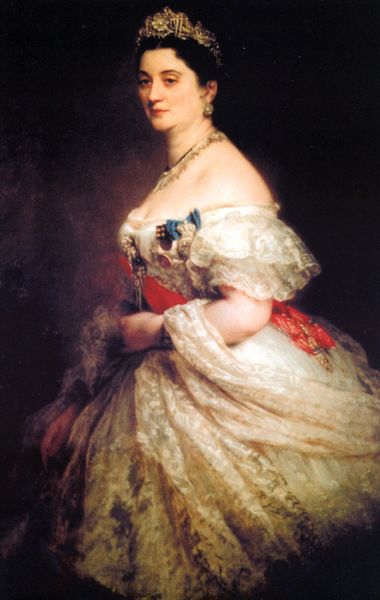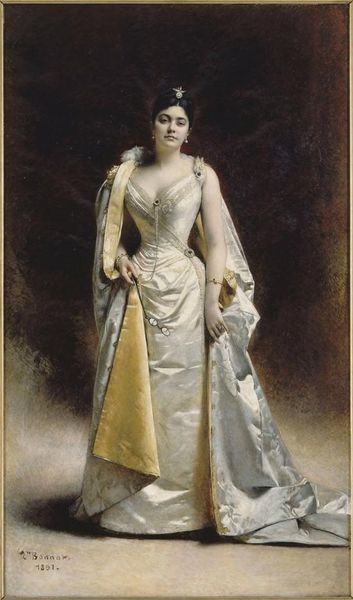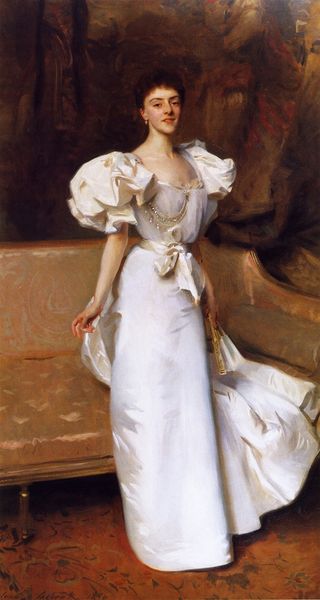
painting, oil-paint
#
portrait
#
art-nouveau
#
painting
#
oil-paint
#
figuration
#
surrealism
#
green
#
academic-art
#
realism
Copyright: Public domain
Editor: Here we have Gabriel Ferrier’s "Portrait of a Lady," an oil painting from 1903. I am struck by the contrast between the dark background and the elaborate lace of the woman's dress. How would you interpret this piece? Curator: This portrait offers us a glimpse into the social stratification of early 20th-century Europe, where status was often signaled through dress. What do you notice about her pose and attire in relation to contemporary ideals of femininity? Editor: She seems very proper, almost regal. The lace and jewelry speak to wealth and a certain formality. Curator: Exactly. Ferrier's meticulous detail in rendering her attire suggests a societal emphasis on appearance as a marker of identity. The Art Nouveau elements subtly frame her, reinforcing her status, while maintaining the Realist precision, highlighting the social currency of such portraits during the period. How might the location where such a portrait would be displayed influence its reception? Editor: Presumably in her home, visible to guests… a silent proclamation of her family’s standing? Curator: Precisely. And what role did salons play in promoting such art and reinforcing these social structures? Editor: So, it's not just a pretty picture; it's a historical document, reflecting the social dynamics of the time. That gives me a fresh appreciation for its significance. Curator: Indeed. Analyzing such pieces allows us to unravel the intricate threads connecting art, society, and power. These images shaped and reflected aspirations and beliefs.
Comments
No comments
Be the first to comment and join the conversation on the ultimate creative platform.
